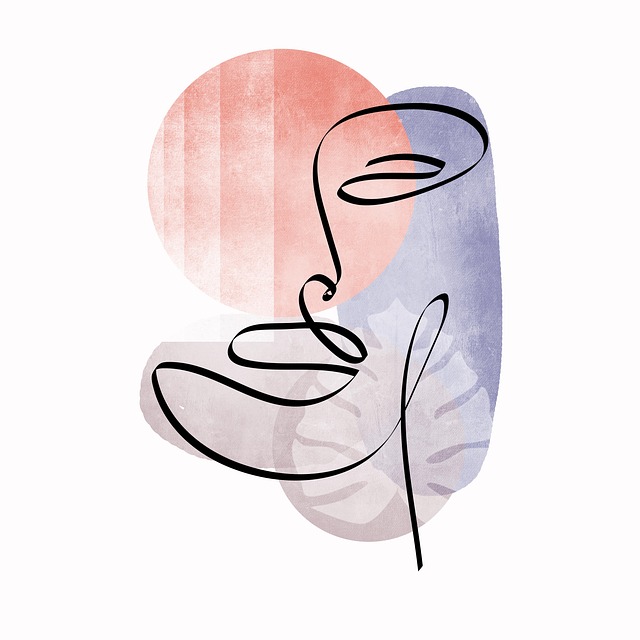Botox has established itself as a popular solution for minimizing dynamic facial wrinkles, specifically forehead lines and frown lines. Safe, minimally invasive injections temporarily paralyze muscles responsible for these wrinkles, with results lasting several months. Key considerations include initial consultation, medical history assessment, and choosing licensed professionals in sterile environments to minimize infection risk. Potential side effects like temporary redness or swelling should be managed through qualified providers and post-treatment care instructions. Regular touch-ups every 3-4 months maintain results, while modern techniques focusing on precise injections reduce risks and enhance outcomes. Patient stories highlight Botox's transformative power, with future trends prioritizing precision, customization, and exploration of broader therapeutic applications.
“Safe Botox usage for treating forehead and frown lines has gained popularity as a non-invasive aesthetic procedure. This comprehensive guide delves into the intricacies of Botox administration, offering insights on understanding its effectiveness for specific concerns. From safety precautions to long-term effects, we explore what to expect during treatments and how often top-ups are needed. Advanced techniques promise safer practices, while patient stories provide real-world perspectives. Discover future trends shaping this industry, ensuring informed decisions regarding Botox for forehead lines and frown lines.”
Understanding Botox for Forehead and Frown Lines

Botox has become a popular choice for those seeking to reduce the appearance of forehead lines and frown lines, often referred to as dynamic facial wrinkles. These wrinkles are caused by repeated muscle contractions, particularly when frowning or squinting, leading to creases and folds in the skin. Botox is a neurotoxin that temporarily paralyzes these muscles, preventing the contractions that contribute to wrinkle formation. By injecting small amounts of Botox into specific areas, dermatologists can effectively smooth out fine lines and give the face a more youthful appearance.
Understanding the mechanism behind Botox for forehead and frown lines is key to ensuring safe usage over time. When administered by a qualified professional, Botox offers a minimally invasive approach to anti-aging. It provides results that last for several months, reducing the need for frequent treatments. Moreover, modern techniques allow for precise injections, minimizing side effects such as bruising or discomfort. Regular intervals between treatments ensure optimal results while avoiding potential risks associated with over-injection.
Safety Precautions Before Getting Botox Injections

Before undergoing Botox injections for forehead lines and frown lines, it’s paramount to prioritize safety precautions. This involves an initial consultation with a qualified healthcare provider who can assess your medical history, understand your treatment goals, and rule out any potential contraindications. It’s crucial to disclose any existing conditions, medications, or recent surgeries as these factors can impact the procedure’s safety and effectiveness.
Additionally, ensuring a sterile environment for the injections is essential. Only licensed professionals should administer Botox, using single-use vials and needles to minimize the risk of infection. Patients should also be aware of potential side effects, such as temporary redness, swelling, or discomfort at the injection sites. Understanding these risks beforehand allows patients to make informed decisions and manage their expectations effectively.
What to Expect During a Botox Procedure

During a Botox procedure for forehead lines and frown lines, patients can expect a relatively quick and painless experience. The process typically involves a comprehensive consultation with a qualified healthcare provider who will assess your specific needs and areas of concern. This initial step is crucial as it ensures the practitioner understands your expectations and can tailor the treatment accordingly.
The actual procedure itself is usually non-invasive. A small amount of Botox is injected into targeted muscle groups using fine needles. This botulinum toxin temporarily paralyses the muscles, preventing them from contracting and causing the lines and wrinkles to relax. Most patients experience minimal discomfort during the injections, and procedures take around 15-30 minutes to complete. Post-procedure, there may be some mild redness or swelling at the injection sites but these typically subside within a few hours.
Long-term Effects of Botox on the Skin

Over time, repeated Botox injections can have a significant impact on skin texture and appearance, especially in areas of frequent treatment like the forehead and frown lines. While Botox is generally considered safe when administered by qualified professionals, long-term use may lead to noticeable changes in skin elasticity and strength. The skin around treated areas might become slightly less responsive to facial expressions due to repeated injections, resulting in a more relaxed and smoother appearance.
However, some individuals may experience temporary or even permanent thinning of the skin, particularly if treatments are performed too frequently or with excessive amounts of Botox. This can make the area more susceptible to damage and less effective at retaining natural moisture levels. It’s crucial for patients considering long-term Botox for forehead lines and frown lines to discuss potential risks and benefits with their dermatologist to ensure safe and effective treatment.
Mitigating Potential Side Effects of Botox

When considering Botox for forehead lines and frown lines, it’s crucial to be aware of potential side effects and take proactive measures to mitigate them. While Botox is generally safe when administered by a qualified professional, it can cause temporary discomfort at the injection sites, such as redness or swelling. Some individuals may also experience headaches or mild muscle weakness in the treated areas.
To minimize these side effects, it’s essential to choose an experienced aesthetic provider who uses sterile techniques and follows best practices. Additionally, patients should be aware of post-treatment care instructions, including resting and avoiding strenuous activities for a short period after injections. Staying hydrated and applying cold compresses can also help alleviate any temporary discomfort or swelling.
Maintaining Results: How Often Should You Get Top-ups?

Maintaining the smooth, youthful appearance that Botox offers requires regular touch-ups, but the frequency varies based on several factors. For those seeking to reduce forehead lines and frown lines, a typical maintenance schedule involves top-up injections every 3 to 4 months. This interval allows for the gradual wear off of the initial treatment, ensuring results remain natural and subtle. The rate at which these lines reappear can differ from person to person; factors like muscle activity, skin elasticity, and individual metabolism play a role in determining the duration of Botox’s effect.
To prolong the benefits, many experts suggest consistent scheduling. By keeping a regular appointment cycle, you can better predict and manage your expected outcomes. Additionally, this approach helps maintain symmetry and prevents one side from appearing more treated than the other. Remember, proper technique and product quality are key; always consult a qualified professional for safe and effective Botox treatments tailored to your specific needs.
Advanced Techniques for Safer Botox Administration

As time goes on, advancements in cosmetic procedures have led to safer and more effective treatments, particularly in the realm of Botox for forehead lines and frown lines. Modern techniques focus on precise injection methods to minimize risks associated with traditional botulinum toxin administration. Skilled practitioners now employ advanced tools and strategies, such as guided imaging and specialized needles, to ensure accurate placement of the injectables.
These innovative approaches allow for tailored treatments that target specific muscle groups responsible for dynamic wrinkle formation. By refining injection techniques, professionals can deliver Botox more efficiently, reducing the chances of unwanted side effects like asymmetry or dip in facial expression. This evolution in botox administration underscores the commitment to enhancing patient safety and achieving natural-looking results in the pursuit of a youthful appearance.
Patient Stories: Real-life Experiences with Botox

In the world of aesthetic treatments, patient stories offer a unique perspective on the real-life experiences with Botox, particularly for forehead lines and frown lines. Many individuals have shared their journeys, highlighting not only the cosmetic benefits but also the impact on their self-confidence. These narratives often begin with a desire to address age-related concerns, such as dynamic facial wrinkles caused by frequent furrowing of the brows or excessive frowning.
Through their stories, patients emphasize the gradual and natural-looking results they’ve achieved over time. Botox has proven effective in smoothing out expression lines, providing a sense of relaxation to the face, and enhancing overall appearance without appearing overly artificial. Real-life experiences also underscore the importance of qualified professionals who can tailor treatments to individual needs, ensuring safe and satisfactory outcomes for all.
Future Trends in Safe Botox Usage

As the demand for non-invasive cosmetic procedures continues to grow, future trends in safe Botox usage will likely focus on precision and customization. Advances in technology, such as more sophisticated needle systems and targeted delivery methods, will enable practitioners to minimize side effects and maximize results. This evolution will be particularly beneficial for treating specific concerns like forehead lines and frown lines, allowing for more nuanced adjustments and a reduced risk of unintended cosmetic outcomes.
Additionally, ongoing research into the long-term effects of Botox will contribute to evidence-based guidelines for safe, prolonged usage. Better understanding of its interaction with the body over time could lead to personalized treatment plans that balance efficacy with safety. This includes exploring new indications beyond traditional facial aesthetics, potentially opening doors for therapeutic applications in areas like chronic migraine management and muscle-related disorders.
